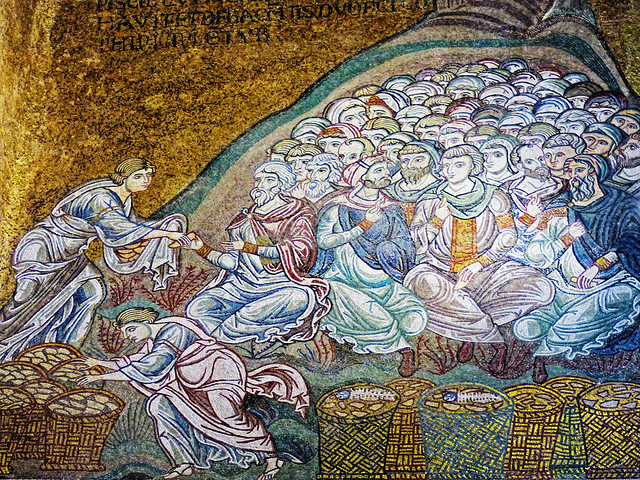Multiplication of Loaves and Fishes - Monreale Sicily
Submitted by walwynThis finely detailed mosaic illustrates the Miracle of the Loaves and Fishes, one of the key episodes in the Gospel narrative (Matthew 14:13–21; Mark 6:30–44; Luke 9:10–17; John 6:1–14). It forms part of the extensive decorative cycle covering the nave and aisles of Monreale Cathedral, executed between c. 1180 and 1218 under Norman patronage.
The composition shows Christ distributing bread and fish through his apostles to a multitude of seated figures. The densely packed arrangement of heads, rendered in fine tesserae of white, grey, and blue, creates a sense of collective presence, while the apostles and attendants act as intermediaries between Christ and the people. The baskets of loaves and fish are depicted with a characteristic Byzantine precision and stylised rhythm.
Typical of Byzantine mosaic art of the Norman kingdom of Sicily, the scene combines Eastern iconographic formality with Western narrative clarity. Figures are outlined in dark tesserae, their robes falling in sharp, linear folds of gold and lapis tones. The composition is grounded in a shallow, golden landscape, a hallmark of the Monreale program, symbolising divine illumination rather than physical space.
This mosaic reflects the broader ambition of the Monreale Cathedral cycle, which sought to visually express the entirety of salvation history from Genesis to the Gospels. Executed by Greek craftsmen likely trained in Constantinople or its Sicilian workshops, it stands among the greatest achievements of Italo-Byzantine art in medieval Europe.


